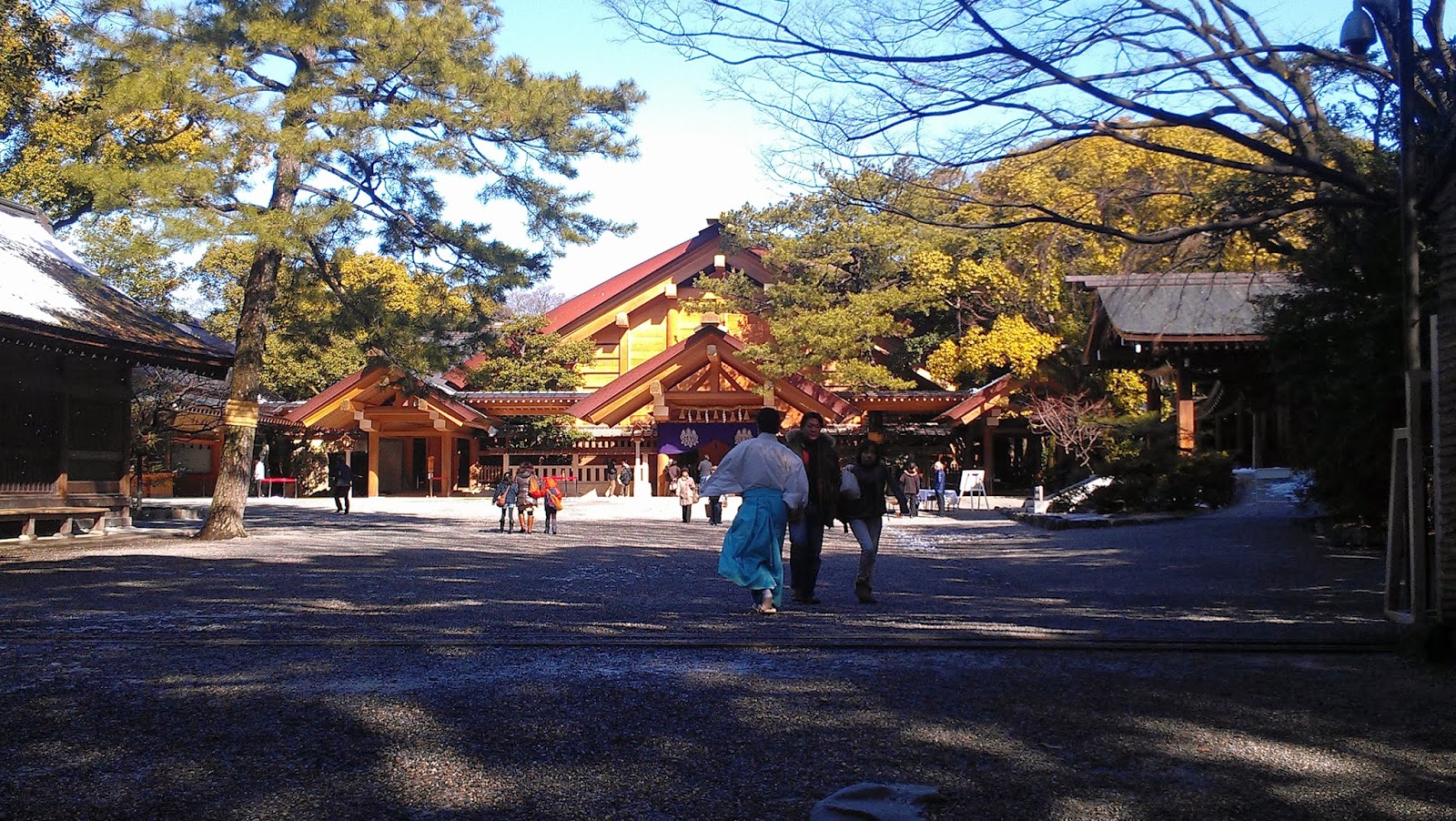Got to visit Atsuta Shrine this last weekend. Though Japanese Buddhism us slightly different that the Buddhism that I grew up with, I was really excited to see such an important religious sight.
Atsuta Shrine (Atsuta Jingu) was founded about 2,000 years ago, starting with the "dedication" of a sword by Prince Yamatotakeru-no-Mikoto. Here begins an interesting story. The sword, named "Kusanagi-no-Tsurugi" which translates to "grass cutting sword" is actually a sword from ancient Japanese mythology. This sword, combined with a large jewel named "Yasakani" and a mirror named "Yata" become the Imperial Regalia. It kind of reminded me of the Deathly Hallows. The picture below shows an artist's interpretation of the treasures, they have reportedly not been seen for many, many years.
 |
| The Imperial Regalia |
The actual whereabouts of this mythical sword are questionable at best. The most believed story is that the sword was lost at sea during the Battle of Dan-no-ura in 1185. Instead of giving up the prized Imperial possessions, it is said that the loyal troops threw them in the ocean. The mirror and the jewel were recovered, but they say that the sword still lies in the deepest depths of the ocean. The story of this sea battle is told in the Tale of the Heike, an epic poem that was passed down orally for a few hundred years before it was put into writing, and because of this, the details of this account aren't always believed.
In any case, a copy of the sword is housed at Atsuta and it is regarded with the highest respect. The shrine is said to be ranked second in importance only the Grand Shrine of Ise in Mie prefecture.
 |
| One of the entrances to the shrine |
The shrine is encased in trees, a mini forest of sorts that builds a barricade against the busy bustling streets outside. It's surprisingly quiet and tranquil once you cross through to the inside.
I guess I was expecting a statue of the Buddha and some incense and flowers, as that's what I'm used to seeing when I go to a Buddhist temple. What I came to find out is that Atsuta is not in fact a Buddhist temple, but a Shinto shrine which are actually not related. Who knew?
Shinto is the "indigenous religion" of Japan. It is based upon the existence of "kamis" or gods that can appear in many different forms, including different artifacts. These kamis are kept in shrines and worshiped as part of the religious practice. Talismans are available at shrines to be kept for various reasons such as safety, prosperity, good luck and so forth. BBC Religions has a rather in depth look at Shinto beliefs and practices if you would like to learn more about the religions.
As Buddhism spread across Japan, as in many other cases throughout history, the two religions were melded together in different ways to help appease an easier coexistence. Many Buddhist temples were set up near Shinto shrines for convenience thus creating a rather hazy boundary between the end of one religion and the start of another. A very interesting article on the differences between Shinto and Buddhism and why they are often confused is linked here.
I personally enjoyed how closely the shrine settled in with it's surrounding, all the trees and bridges and pebbles and water flowing. There was a walking path around the more sacred part of the shrine where you weren't allowed to take pictures because of the sanctity of area, which I thought was very cool. Though I do wish that I had been able to find a map of sorts to guide me through where I was walking, I enjoyed the peaceful little break the shrine gave.

 |
| Saki barrels given as offering |

 |
| A torii gate - one of the main entrance into the shrine |








No comments:
Post a Comment